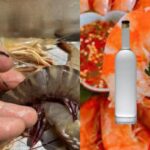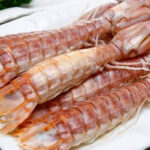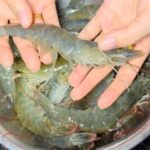How to Choose and Prepare Shrimp
When it comes to boiling or steaming shrimp, opt for fresh, large shrimp for the best texture and taste. Ideally, choose shrimp that are still alive and vigorously wriggling.
Look for shrimp that are actively swimming, with clear, glossy shells. When pressed, the shrimp should feel firm and springy. The head and legs should be firmly attached to the body. Ensure the whiskers and claws are intact.
If fresh shrimp are unavailable, frozen shrimp are a good alternative. Purchase them from a reputable source, and avoid any with an odd odor.
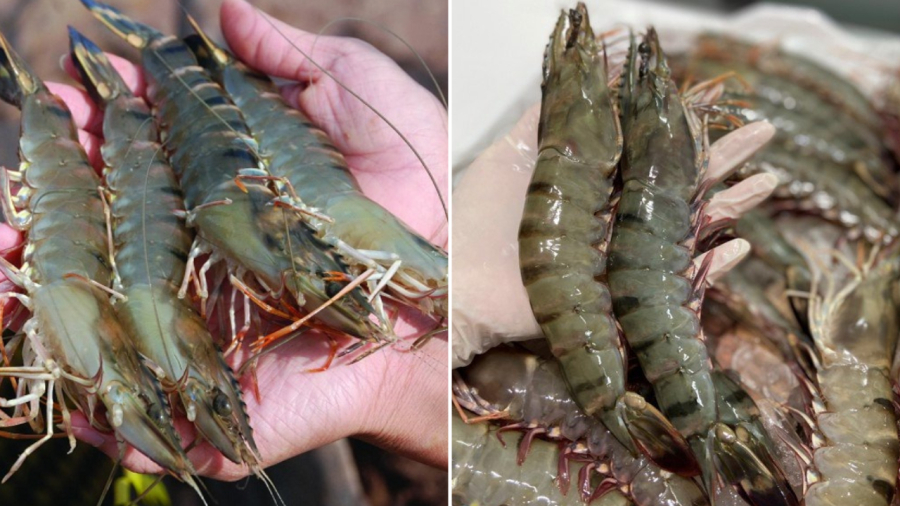
Choosing fresh shrimp is paramount for a delicious, sweet boiled shrimp dish.
Once you’ve purchased your shrimp, clean them by removing any residual sand from the head area, and carefully devein them. There are various methods to devein shrimp; one simple technique involves using a sharp skewer to pierce through the tail section and then gently pulling out the black vein.
Rinse the shrimp in a mild salt water solution, followed by a quick rinse in clean water.
Place the shrimp in a bowl and marinate them with a splash of white wine or half a can of beer, along with a pinch of sugar. This not only helps eliminate any fishy odor but also enhances the shrimp’s color when cooked. The sugar aids in retaining moisture, resulting in sweeter, juicier shrimp. After marinating for a few minutes, drain the shrimp and let them air dry before boiling.
Essential Spices for Boiled Shrimp
To elevate the flavor of boiled shrimp and neutralize any residual fishiness, prepare a spice blend with ingredients like julienned ginger, sliced lemongrass, and chili peppers (optional, depending on your spice preference).
Tips for Boiling Shrimp
You have the option to either boil the shrimp directly in water/beer/coconut water or steam them.
For boiling, pour the liquid of your choice into a pot and bring it to a rolling boil. Add the shrimp and cook until they turn opaque. Once the water returns to a boil, you can turn off the heat. Cover the pot and let the shrimp sit in the hot liquid for an additional 1-2 minutes, depending on their size. When the shrimp have turned red and their bodies have slightly curled, they’re done. Boiling shrimp in hot liquid results in sweeter meat and eliminates any fishy odor. The residual heat also ensures even cooking, keeping the shrimp tender and juicy.
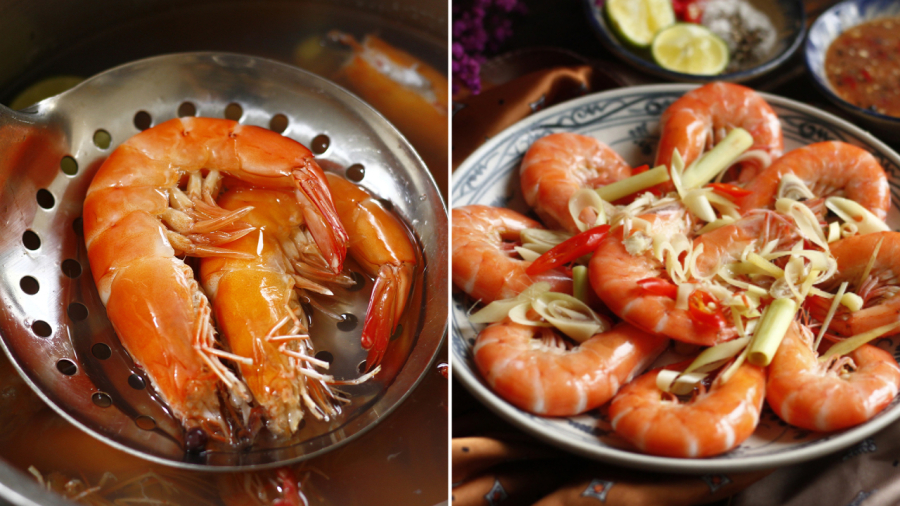
Overcooking shrimp can lead to dryness and a rubbery texture.
If steaming, arrange the shrimp on a steaming rack along with the lemongrass and ginger. Once the water in the steamer boils, place the rack inside and cover. Steam until the shrimp turn red and their bodies curl, then turn off the heat. Steaming shrimp for too long will result in tough, dry meat.
Remove the cooked shrimp from the heat source and drain the excess liquid. It’s important to let the shrimp air dry before serving; otherwise, the residual hot liquid will continue to cook the shrimp, making them soft and less firm.
The Ultimate Guide to Buying Shrimp: How to Avoid the Cheap and Nasty and Choose Sustainable, Delicious Shrimp Every Time
“When it comes to buying shrimp, it’s important to be a savvy shopper. While you may be tempted by rock-bottom prices, it’s crucial to remember that some deals are simply too good to be true. Cheap shrimp may seem like a bargain, but it could end up costing you more in the long run if it’s not fresh or of good quality. So, keep your wits about you and trust your instincts – if it seems too cheap, it probably is. It’s always better to be safe than sorry when it comes to your health and your wallet.”
























